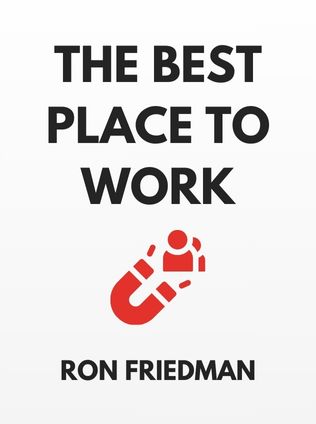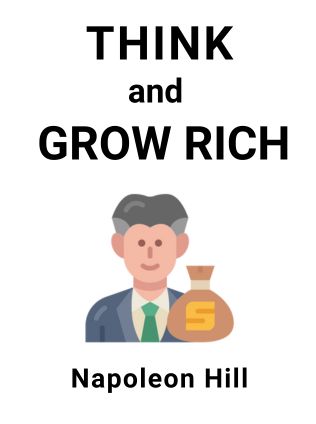
The Best Place to Work
The Art and Science of Creating an Extraordinary Workplace
By Ron Friedman
Published 12/2015
About the Author
Ron Friedman, Ph.D., is an award-winning psychologist and the founder of ignite80, a consulting firm that helps leaders build extraordinary workplaces. He has served on the faculty of the University of Rochester, Nazareth College, and Hobart and William Smith Colleges. His research has appeared on NPR and in major newspapers such as The New York Times, Washington Post, Boston Globe, and The Guardian. Friedman's expertise lies in combining scientific insights with practical applications to enhance workplace performance and employee well-being.
Main Idea
The core premise of The Best Place to Work is to use the latest research from motivation, creativity, behavioral economics, neuroscience, and management to create an extraordinary workplace. Ron Friedman reveals what truly makes us successful at work and provides actionable recommendations for leaders to promote smarter thinking, greater innovation, and stronger performance.
Table of Contents
- Designing an Extraordinary Workplace Experience
- Motivating Excellence
- Attracting and Retaining Top Performers
Designing an Extraordinary Workplace Experience
Success is often perceived as a linear journey, but creative geniuses like Shakespeare, Dickens, and Picasso produced far more than their contemporaries by embracing failure as part of the process. They understood that quantity leads to quality. This principle also applies to organizations such as Google, which encourages experimentation and accepts failure as a step towards innovation.
“Even if you fail at your ambitious thing, it’s very hard to fail completely. That’s the thing that people don’t get.” - Larry Page
The design of our workplaces significantly impacts our performance. Companies like Google, Intel, and Cisco invest heavily in creating environments that foster innovation. Drawing from evolutionary psychology, Friedman suggests that our preferences for certain environments are rooted in our history as hunter-gatherers. Spaces that provide sunlight, views, and a sense of safety promote well-being and productivity.
To optimize workspaces, companies should offer a variety of environments to support different tasks. This includes areas for focused work and collaboration, as well as spaces for relaxation and play. Strategic distractions can lead to smarter decisions and more innovative ideas, as our brains often make connections when we are not actively working on a problem.
Moreover, creating a positive work environment involves understanding the psychological needs of employees. Small, frequent pleasures can keep us happy longer than large, infrequent ones. Introducing variety and unexpected pleasures, such as surprising employees with a day out or an impromptu celebration, can significantly boost morale. Experiences are more rewarding than objects, as they often involve social interactions and create lasting memories.
Another crucial aspect is fostering a sense of community within the workplace. Research shows that workplace friendships lead to higher productivity. Friends are more committed to their tasks, communicate better, and offer positive encouragement. Shared activities, such as team-building exercises or social events, can catalyze these relationships and improve overall workplace dynamics.
Motivating Excellence
Motivation is not just about quantity but also about the type. Intrinsic motivation, driven by the enjoyment of the work itself, is more sustainable than extrinsic rewards like money. Warren Buffett’s management style, which grants autonomy to his employees, is a prime example of fostering intrinsic motivation. Employees who feel a sense of ownership over their work are more engaged and motivated to excel.
“The feeling of ownership that’s created by allowing employees decision-making freedom is itself an investment.” - Ron Friedman
Frederick Winslow Taylor’s scientific management focused on optimizing efficiency through strict oversight and performance-based pay. However, modern research shows that autonomy, competence, and relatedness are key to motivating employees. Providing meaningful rationales, defining outcomes rather than processes, and using open-ended questions can enhance employees’ sense of autonomy.
Recognition is also crucial for motivation. It satisfies our need for competence and provides the feedback necessary for improvement. Managers should focus on fostering positive relationships and setting social norms that encourage productive behaviors. Employees are more likely to be engaged when they feel respected and valued by their peers and leaders.
Moreover, integrating work and personal life improves overall job satisfaction and performance. Allowing employees flexibility to manage their schedules, such as taking time off to attend a family event, fosters loyalty and reduces stress. Recognizing the limits of mental and physical energy is also vital. Providing opportunities for rest and recovery, such as breaks and vacation time, can prevent burnout and maintain high levels of productivity.
Attracting and Retaining Top Performers
Finding extraordinary employees requires improving the quality of the applicant pool. Encouraging current employees to recruit their talented peers can lead to a stronger team. Blind auditions, similar to those used in orchestras, can help minimize biases during the hiring process. Creating job-relevant assignments for candidates allows for a more accurate assessment of their skills.
To create an extraordinary workplace, leaders must address the psychological needs of their employees. This involves providing opportunities for autonomy, competence, and relatedness. Integrating work and family life, recognizing the limits of mental and physical energy, and designing flexible work environments are essential for fostering engagement and productivity.
“When we fulfill employees' needs for autonomy, competence, and relatedness, we achieve more than an extraordinary workplace. We create an organization that performs at its very best.” - Ron Friedman
Ultimately, creating a great workplace requires a commitment to understanding and meeting the diverse needs of employees. By leveraging scientific insights and fostering a supportive culture, organizations can attract and retain top talent, driving long-term success and innovation.
Sign up for FREE and get access to 1,400+ books summaries.
You May Also Like
The Subtle Art of Not Giving a F*ck
A Counterintuitive Approach to Living a Good Life
By Mark MansonThe Lean Startup
How Today's Entrepreneurs Use Continuous Innovation to Create Radically Successful Businesses
By Eric RiesWho Moved My Cheese?
An Amazing Way to Deal with Change in Your Work and in Your Life
By Spencer Johnson, M.D.You Are A Badass
How to Stop Doubting Your Greatness and Start Living an Awesome Life
By Jen SinceroDaring Greatly
How the Courage to Be Vulnerable Transforms the Way We Live, Love, Parent, and Lead
By Brené Brown



















